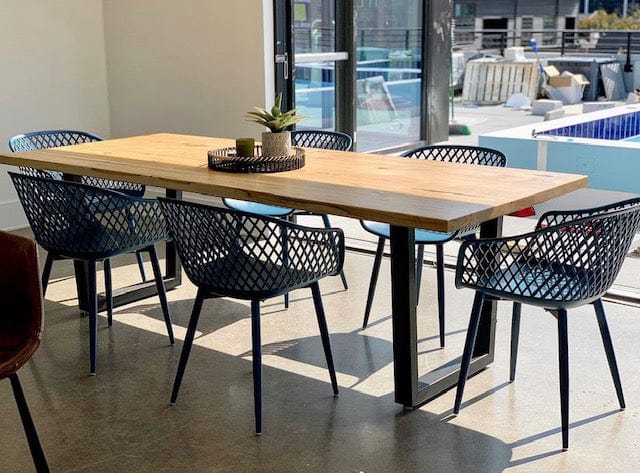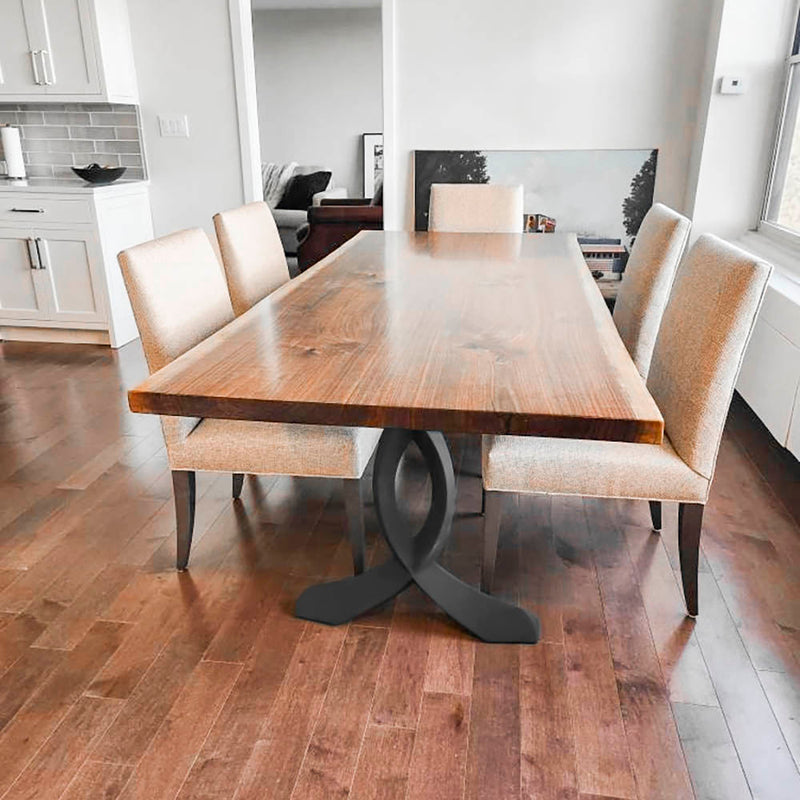Enhance Your Dining Room with Unique and Modern Dining Room Table Legs
Enhance Your Dining Room with Unique and Modern Dining Room Table Legs
Blog Article
From Standard to Modern: Locate the Suitable Dining-room Table Legs for Your Design
The selection of eating area table legs plays a crucial function in specifying the total personality of your room, linking the space in between standard craftsmanship and contemporary appearances. While timeless designs such as cabriole and turned legs stimulate a feeling of classic elegance, modern styles like hairpin and geometric options provide an opportunity for striking aesthetic passion. Evaluating the right balance in between these styles requires a nuanced understanding of your existing décor and personal preference. As you take into consideration these aspects, the inquiry stays: exactly how can you seamlessly integrate these varied leg designs to develop a harmonious dining experience?
Understanding Table Leg Styles
The range of dining area table leg styles can substantially affect both the looks and functionality of the space. Each leg style adds distinct practical features and visual elements, accommodating diverse layout choices and usage needs. Understanding these styles is crucial for selecting the right table that lines up with your general indoor style vision.
As an example, tapered legs offer a tidy, classic look that can enhance a space's elegance, while stand bases provide stability and maximize legroom, making them perfect for smaller sized areas. Barrette legs, a characteristic of mid-century modern design, present a commercial style, allowing for an airy, open feel. In a similar way, trestle legs stimulate rustic charm, providing durable support and a feeling of timelessness.
Wood legs can bring warmth and structure, whereas metal choices often communicate a streamlined, contemporary vibe. Inevitably, comprehending table leg styles is necessary for creating a cohesive dining area that mirrors personal style while guaranteeing functionality and comfort.
Standard Table Leg Options
When picking dining-room table legs, traditional alternatives usually personify classic style and workmanship. These designs mirror an abundant heritage and a dedication to top quality, making them optimal for those that appreciate classic visual appeals.
One of the most iconic standard leg styles is the cabriole leg, characterized by its stylish rounded form. This style frequently includes ornamental carvings and is most frequently located in Queen Anne and Chippendale furnishings. Another preferred choice is the transformed leg, which boasts a series of smooth, rounded forms that give a classic look while preserving security.
Additionally, the straight leg, while easy, provides a strong and basic framework that can mix seamlessly with a range of tabletop styles. For those drawn to ornate describing, claw-and-ball feet legs evoke a feeling of grandeur and can offer as a spectacular prime focus in any kind of eating area.
Finally, stand bases, although not strictly legs, supply an alternate conventional choice that permits for enough legroom and can be magnificently sculpted. Each of these standard leg styles adds to the total ambiance of a dining-room, marrying feature with aesthetic charm.

Modern Table Leg Styles
Modern table leg designs provide a diverse array of designs that highlight tidy lines and innovative products. These designs usually focus on functionality while acting as striking centerpieces within a dining area. Minimal visual appeals are widespread, with legs crafted from materials such as steel, glass, and crafted wood, which add to a contemporary and ventilated feel.
One preferred design is the hairpin leg, identified by its slim, tapered framework that gives security without overwhelming the tabletop (dining room table legs). This design is typically found in mid-century contemporary furnishings and can easily enhance different table forms. An additional pattern is using geometric forms, where legs may tackle unbalanced or angular forms, including visual interest and a touch of virtuosity

Mixing Styles for Unique Areas
Commonly, house owners look for to produce distinct dining spaces that mirror their individual design by mixing numerous layout elements. This technique permits the consolidation of diverse visual appeals, resulting in a harmonious yet unique environment. As an example, pairing a rustic wood table with sleek, contemporary steel legs can produce a distinctive comparison that elevates the area's general allure.
Furthermore, integrating vintage table legs with contemporary tabletops can stimulate a sense of history while maintaining a modern-day sensibility. Such mixes not only showcase individual preference but additionally encourage imagination, permitting homeowners to curate a space that feels both personal and inviting.
Color plays a crucial duty in this blending process; picking table legs that enhance or comparison with the existing color design can Check Out Your URL improve visual you can try these out rate of interest. As an example, whitewashed legs can soften the boldness of a dark table surface, creating a well balanced visual.
Tips for Selecting the Right Legs
Choosing the right table legs is crucial for attaining both functionality and aesthetic charm in your dining room. Begin by thinking about the general style of your area. Typical setups profit from legs that feature complex carvings or transformed designs, while modern rooms might ask for sleek, minimalist designs.
Following, assess the elevation and stability of the legs. dining room table legs. Conventional eating tables vary between 28 to 30 inches in elevation, so ensure the legs enhance this measurement for comfort. In addition, robust materials, such as wood or steel, can improve stability and durability
Review the leg form too-- alternatives consist of straight, tapered, or stand styles. Straight legs offer a classic look, while conical legs can add a touch of beauty. Pedestal bases provide adequate legroom and are perfect for smaller spaces.
Verdict
In recap, selecting the optimal dining-room table legs needs careful factor to consider of both typical and modern-day styles. Conventional alternatives such as cabriole and transformed legs supply timeless style, while modern designs like hairpin and geometric forms offer a contemporary touch. By balancing leg style, height, and material with the general decoration, a natural and welcoming atmosphere can be achieved. Ultimately, the chosen table legs should reflect the desired visual, enhancing the eating experience within the area.
The range of dining room table leg styles can substantially affect both the aesthetics and capability of the area. Ultimately, comprehending table leg designs is necessary for developing a cohesive eating location that shows individual design while guaranteeing practicality and comfort.One of the most iconic traditional leg styles is the cabriole leg, identified by its elegant bent shape. Straight legs provide a classic look, while tapered legs can add a touch of sophistication.In recap, selecting the optimal dining room table legs needs careful factor to consider of both modern-day and standard designs.
Report this page